I am fairly new to CSS Media queries. I am actually trying to adjust left margin for a button ('Add+' button as shown in the attached image) for different screen widths. I am trying to do this:
@media only screen and (min-width: 200px) and (max-width: 350px)
{
.button_orange_extended
{
margin-left:0px;
}
} /*Media query for one specific screen width*/
@media only screen and (min-width: 360px) and (max-width: 400px)
{
.button_orange_extended
{
margin-left:30px;
}
} /*Another Media query for specific screen width*/
@media only screen and (min-width: 400px) and (max-width: 450px)
{
.button_orange_extended
{
margin-left:80px;
}
}
By this means, i got to write this code around 10-12 times and adjust margin accordingly. Considering that i need to adjust margins not only for mobiles but for other devices like tablets. So, is there an short alternative approach? (Below is the image).
